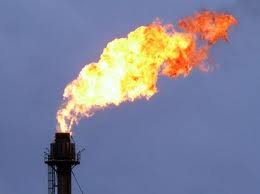 No Dry Wells in the Eagle Ford
No Dry Wells in the Eagle Ford
Drop any illusions you may have brought about wildcatting speculators like Daniel Day Lewis’ Daniel Plainview in There Will Be Blood hoping to get-rich-or-die-trying to strike oil, because the Eagle Ford Shale doesn’t work that way. We quickly get the sense that major capital and major expertise is at work here.
An engineering buddy of mine who made his career in Midland, TX had earlier explained to me why Eagle Ford doesn’t favor the wildcatter, but rather the big, well-capitalized firms. It also doesn’t favor clever geological or engineering techniques which, in the past, helped some wildcatters find their ‘edge.’
Basically, my buddy told me, there’s no discovery-risk involved in fracking the Eagle Ford shale. There are no ‘dry wells,’ as it’s well known exactly where the shale formation exists. Our host company has fracked 219 wells as of this writing, for example, and reports 210 wells flowing enough to sell product.
In a shale play like the Eagle Ford, the main trick is to acquire enough leasing rights in good areas (this requires money) and then be able to pay the $7-8 million it takes to drill and frack underneath your leasing area (which also requires money). Unlike in trickier geological areas, the scarce “resource” is not engineers’ or geologists’ ideas, but rather, money.
Oil and gas will definitely flow when you blast the Eagle Ford shale rock with water, sand, and chemicals – the only question is whether you get paid enough at the end to justify your costs. As of this writing – and I’ll describe more of this later – gas does not recoup your drilling costs, but oil[1] does.
The Buzz in Beeville – Our Host Company Described
There’s nothing small about the drilling and fracking operations in the Eagle Ford shale in Texas. On the contrary, this is a big, corporate, and capital intensive business. The more time we spend with the host company, the more we got a sense for the enormity of the Eagle Ford shale play.
Upon arrival at the regional office of our host drilling company – in the town of Beeville, TX – the State Rep and I are buzzed into a conference room. Naturally, a government affairs official of the company has been assigned to our day’s tour, as have two other members of its public relations team.
The head government relations guy used to work on drill
sites, including – we subsequently learn – the North shore of Alaska. The second PR person is a kindly-looking middle aged woman from Louisiana, and the third is a young woman from Midland, TX who is in charge of the company’s ‘sustainability’ program.
The fourth member appears to have a bit more grit under his fingernails as a manager of “Upstream Operations” which, I gather from subsequent conversations, means he takes the oil and gas once it’s aboveground and manages the process of getting the stuff sold and delivered to refiners.
Mr. Northern Alaska and Mr. Grit describe their drilling company as medium-sized, estimating they’re the 12th largest independent working in the Eagle Ford region among 78 independent operators.[2] They operate 12 drilling rigs in the area, out of a total number of 286 deployed rigs. Knowing this is a $15 Billion market-capitalized public company gives us a sense, however, of the very large scale of operations under way down here. Many more even bigger companies than our hosts are investing massive amounts of capital in lease acquisition, drilling, strorage, and pipelines.
Safety and Environmental Precautions
Still in the conference room in corporate headquarters, Ms. Louisiana hands us our light-blue flame-resistant jump suits and steel-toed boots for the upcoming tour. Next we collect our protective eyewear and hard-hats. We climb into our blue jump suits rather awkwardly, and lace up the boots.
I haven’t been dressed like this for work since my acting role as a government scientist attempting to monitor and kill E.T. in a suburban California cul-de-sac. Only this time, we are dressed to kill renewable wind and solar energy – an equally lovable creature – too fragile for this world.
Mr. Grit offers a quick safety briefing on the hazards of poisonous gases that may appear on drilling sites. He attaches a monitor to his chest that looks like a mini-version of those yellow waterproof Sony ‘Sport’ Walkmans that I so badly coveted as a kid. He assures us the monitor does not play over-synthesized pop hits, but rather, alerts the wearer, like the proverbial coal-mine-dwelling canary, to the presence of hydrogen sulfide.
Which poison, it turns out, sometimes bursts free of its underground home.
We’re miles from a drilling site but already inundated with safety precautions and risk-averse behavior, swathed in protective gear from toes to eyeballs. These are not your grandfather’s oil-rig cowboys.
The six of us – 3 PR folks, Mr. Grit, the State Rep, and me – jump into the drilling company’s SUV and head out to our first stop, a just-built drilling pad.
Please also see Part I – Mad Max Bizarro World
and Part III – Fracking and Drilling
[1] There’s a third type of hydrocarbon in the Eagle Ford shale that the industry refers to as ‘condensate,’ which can be oversimplified as lower-quality oil. It is economically viable at this point to extract condensate, but not as profitable overall as oil.
[2]The “Independent” label distinguishes these companies from “the majors,” like Exxon, Shell and BP, which do everything from exploration to drilling to refining to selling you automobile gasoline at a filling station. The “independents” only do the exploration and drilling for oil, gas, and condensate, which they then sell or deliver to a company that will refine it into a useable form.
Post read (8265) times.
